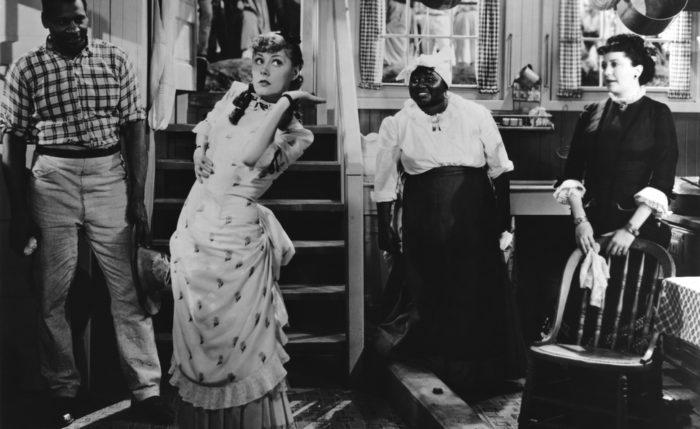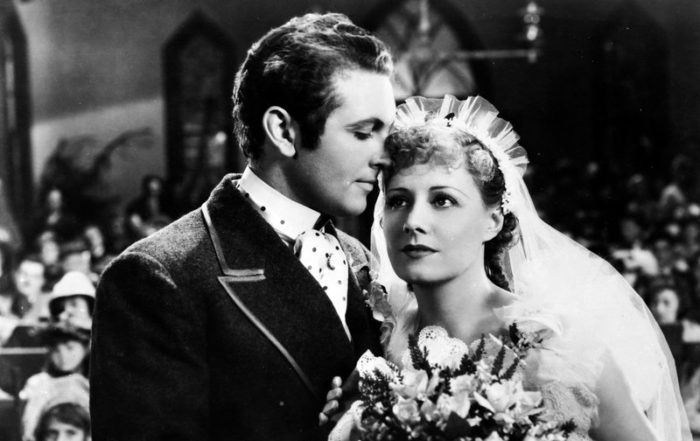
It’s now dawning on me that I’ve been the one to review a movie on the 4th of July all four years that we’ve been doing Criterion Month. These reviews usually consist of me making some off-hand remark in the first paragraph about how crappy current-day America is before moving on to talk about the film in question. However, with this year’s 4th of July review, it’s a little hard for me to move on from current-day America, because one of our current dilemmas of trying to make media more diverse is a big part of Show Boat. While the film’s intentions are more than noble in that regard, there are more than a few things that are problematic about it, which — for better more than worse — makes it about as American as apple pie.
Before we get to talking about the 1936 adaptation of Show Boat, let’s give a little bit of context. Show Boat was first written as a novel in 1926 by Edna Ferber, and then was adapted into a stage production a year later by Oscar Hammerstein and Jerome Kern. The musical became an instant smash success, noted for its lavish production and musical numbers as well as the way it combined its spectacle with more serious social issues. It was considered ground-breaking in the fact that is commonly known as the first racially integrated musical. Yet, despite the musical’s forward-thinking ideas, subsequent revivals of the musical have been met with some controversy over the years, since like pretty much anything from 1927, the musical’s depiction of race doesn’t exactly hold up.
A film adaptation was first attempted in 1929 as a half-talky produced by Carl Laemmle, who was dissatisfied with the film, and then handed off the 1936 production to his son, Carl Laemmle, Jr. This then led to the involvement of director James Whale, who along with Laemmle Jr. made The Invisible Man and the Frankenstein movies, which clearly aren’t in the same as ballpark musicals, but do have a kind of madcap energy. Whale wanted to make the movie as close to the stage production as possible, using basically all of the actors who appeared in the stage production and even hiring Oscar Hammerstein to pen the script. So I have to imagine this feels pretty similar to what the original stage production was (other than the fact that the stage production is usually over 3 hours long) while having a nice variety of on-location and on-set shooting that keeps it from ever feeling too stage-y.
You could say that Show Boat is about a lot of things, but I think more than anything it’s about family. It begins by introducing us to the Hawks family, who own a show boat — which is exactly what it sounds like. It’s a boat that puts on shows, performing up and down the Mississippi River in each town they come across. The patriarch of the family, Cap’n Andy (played by Charles Winninger) oversees all of the productions, while his daughter Magnolia (Irene Dunne) has secret ambitions of appearing in the shows, but is forbidden by the family matriarch, Parthy (Helen Westley). However, this all changes when the troupe is performing in the South and the show’s star Julie (Helen Morgan) is outed as being part Black and has been passing for white. Furthermore, Julie is in a mixed-race marriage with a white man — then illegal in most Southern states during the film’s 1880s setting. Though Julie and her husband figure out a way of escaping arrest, Cap’n Hawks unfortunately has no choice but to let Julie go, since they’re only performing for segregated white audiences.
This then gives Magnolia the chance to become the star of the boat’s shows, while she becomes more and more romantically involved with Gaylord Ravenal (Allan Jones), another performer who has recently come aboard the show boat. Some years go by, and after Gaylord and Magnolia marry, they move to Chicago and have a child while Gaylord lives off of being a gambler. Gay (short for Gaylord) then loses a bunch of his money and is forced to leave Magnolia to raise the child alone. She ends up at an audition where Julie has reappeared, and Magnolia gets the part by performing one of the songs Julie taught her, which leads to Magnolia experiencing tremendous success on the stage in New York.
What I didn’t get to mention in that plot description was the presence of Paul Robeson as Joe the boat worker, mainly because he’s mostly in the background of the main plot, but makes a big impact nonetheless. Specifically, he sings “Ol’ Man River”, the musical’s signature number, and perhaps one of the more thrilling moments in any movie musical. I can’t imagine what it was like for Black audiences to see Paul Robeson sing this song onscreen when Show Boat was originally released. But as someone who’s watched numerous (very white) musicals from Hollywood’s golden age, there’s something remarkable about the way the movie sets up the storylines for all the main white characters in ways you’d typically expect. But then, it abruptly turns its eye to Joe, singing about the hardships of being a Black man in post-Civil War America as we cut to images of Joe’s arduous existence.
The other stand-out numbers that highlight the film’s (for the 1930s) diversity involve Joe’s wife Queenie (played by Academy-Award winner, Hattie McDaniel) and the musical’s mix of more western styles of music with more blues- and jazz- influenced sounds. It’s somewhat ironic that this story does touch on the idea of cultural appropriation, considering the way that Magnolia uses her knowledge and proximity to “negro music” to further her career, while the musical’s songs themselves indulge appropriation. I say “ironic” because I’m not entirely sure that the film is actually aware of this idea being present in the material, but it’s not surprising that more recent iterations of the stage production have leaned into these ideas about cultural appropriation.
So, obviously, there are some things in here that are very refreshing to see in a 1930s film but are a little questionable today, the biggest being that there’s a scene of blackface. Yep. That’s right. Irene Dunne gives a musical performance in this most shameful of American stage tropes in a scene that (like most blackface) doesn’t intend to be offensive, but of course can’t help but be. Honestly, if it wasn’t for that scene, I’d probably give this movie 4 stars. It’s got some great numbers, the cast is wonderful, and James Whale’s camera feels a lot more dynamic than most 30s musicals that I’ve seen. I didn’t even get into how Magnolia’s story of “making it” as a single mother gives it some under-discussed feminist undertones. That said, it’s hard to completely recommend a film that features about a minute of cultural insensitivity that will make you deeply uncomfortable. But hey, ain’t that America.

